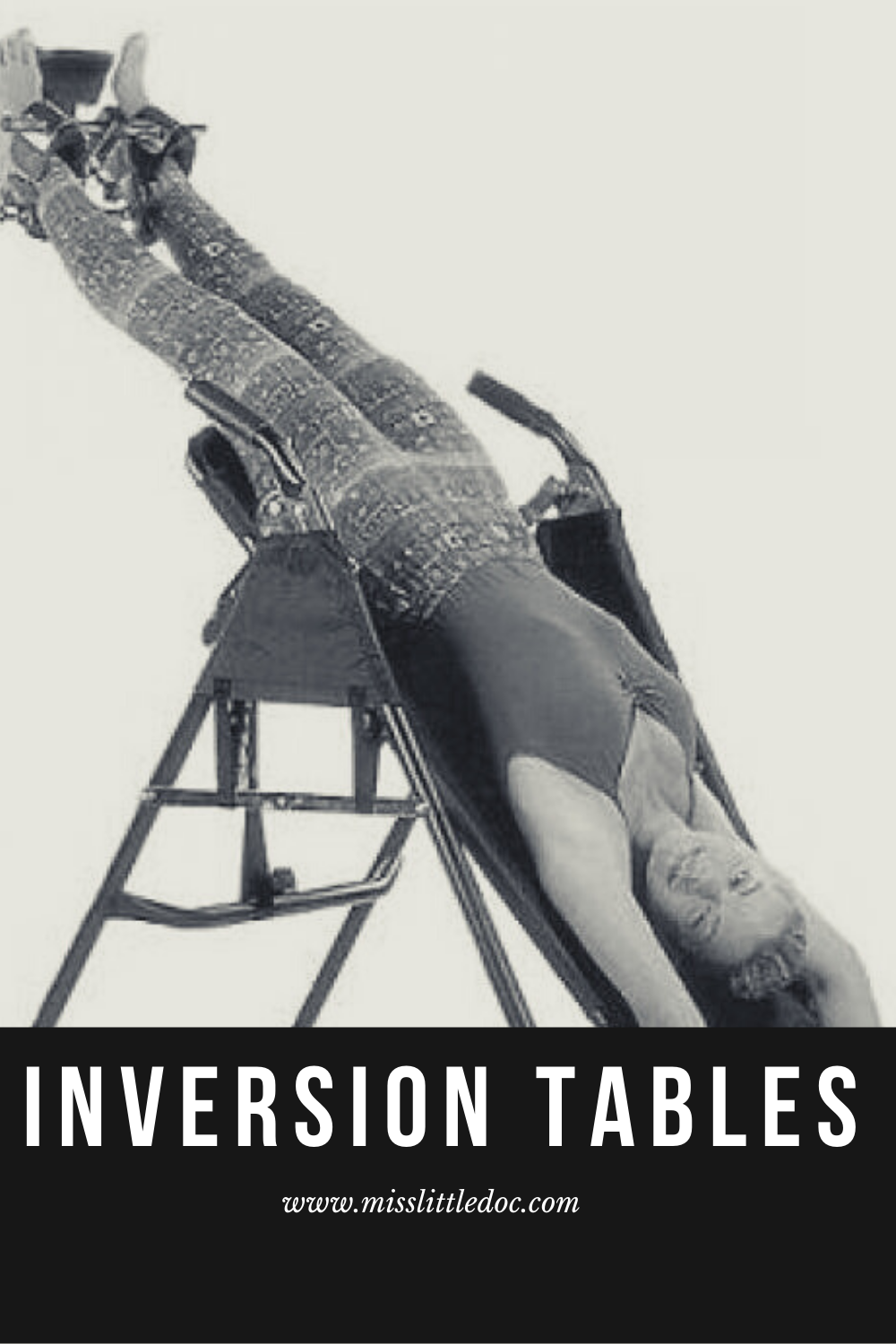Inversion Tables
Inversion tables work as a spinal decompression therapy. Meaning you strap your feet onto the table and slightly tip the table where your head is below your feet. This allows for the bones in your back to be pulled apart to relieve pressure and/or pain by using gravity and your own bodyweight. This alleviates the pressure of compressed discs.
Hanging upside-down to relieve pain and the effects of gravity have been documented as far back as 400 BC when Hippocrates, the famous physician, observed a patient being hung by his knees and ankles from a ladder to relieve an ailment.
Inversion tables can be very effective as helping relieve chronic low back pain while in conjunction with receiving chiropractic care. They can also be helpful in conditions such as sciatica and increasing flexibility.
Inverting Rules
I tell patients to start out slow when starting to invert. Go for a minute or two and slowly add 30 seconds worth of time to each session of inversion. I usually only recommend 10 minutes of inversion per session.
A good angle to start with is 15 degrees and gradually increase the inversion from there. It is recommended you don’t go farther than 60 degrees.

If going to the inverted position makes you sore or makes any pain you are having worse, you need to either decrease your time you are inverting or completely stop all together. Not everyone will get relief from an inversion table. Unfortunately, the only way you will know is to try it!
Once you are comfortable and get some relief with inverting, you can add some exercises and light stretching.
Risks of Inversion
Inversion therapy is not safe for everyone. While hanging upside down for more than a few minutes, your blood pressure increases. Avoid inversion therapy if you have:
- high blood pressure
- heart condition
- glaucoma
- back or leg fracture
- osteoporosis
- hernia
Chiropractic
A study entitled, “Adaptation of Tilt Table for Lumbar Traction,” published in the Journal of Canadian Chiropractic Association, found that 88% of patients who underwent a series of eight inversion table treatments found major improvements in a number of complaints including spondylolisthesis, herniated discs, sciatica, and tailbone pain.
Chiropractic care is very effective in treating low back pain. At our office we do muscle therapy along with the chiropractic adjustment. If you have any questions on your condition, whether an inversion table would work for you or any other questions give us or a chiropractor near you a call.
Low back pain will not go away on its own. It may go away for a short time, but it will always return and typically worse than the first time. The sooner you get treatment for pain the better off you and your wallet are.
~Dr. Lacey~
Carder Chiropractic Clinic, INC.
El Reno, OK 73036



